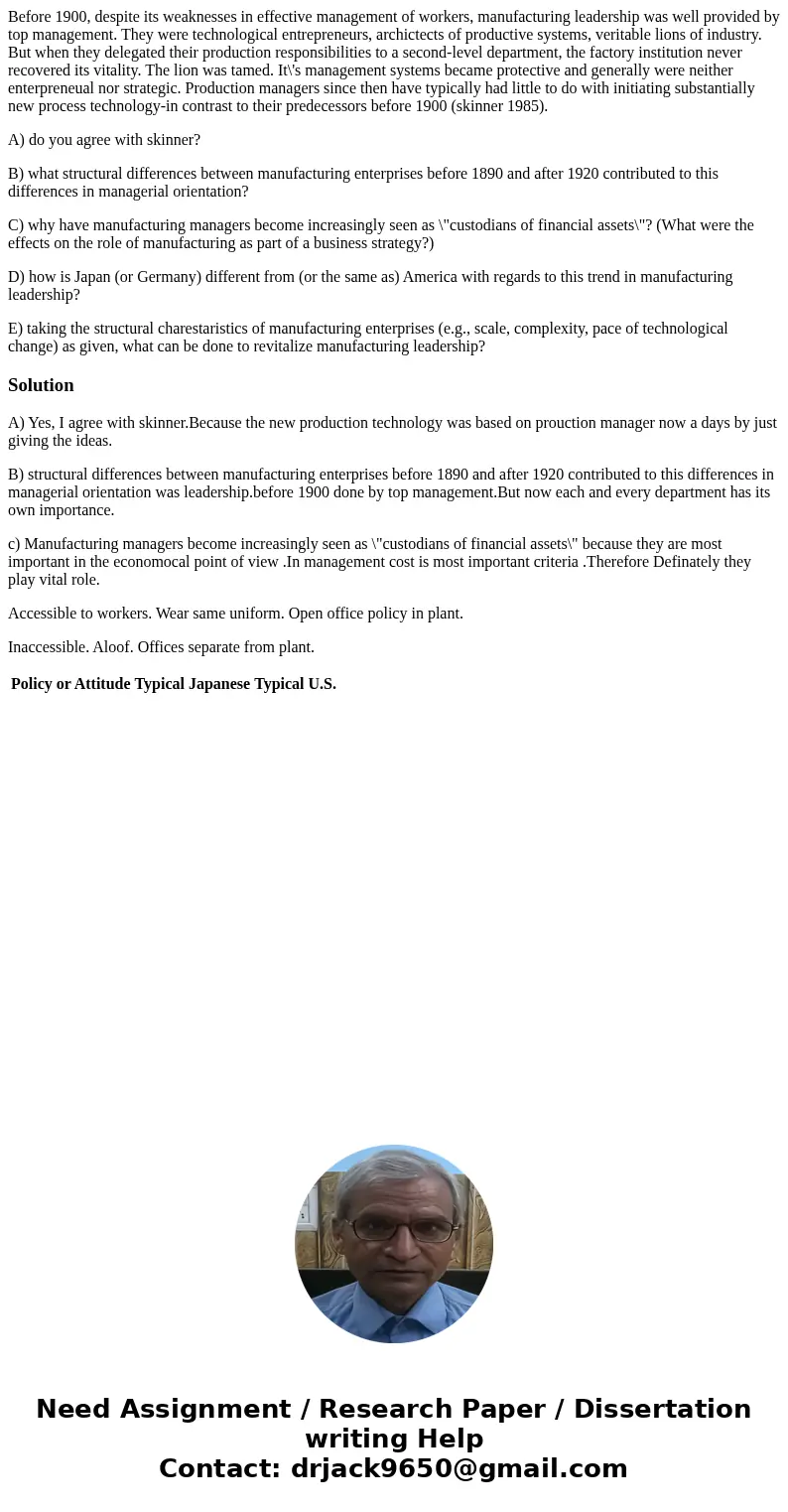Before 1900 despite its weaknesses in effective management o
Before 1900, despite its weaknesses in effective management of workers, manufacturing leadership was well provided by top management. They were technological entrepreneurs, archictects of productive systems, veritable lions of industry. But when they delegated their production responsibilities to a second-level department, the factory institution never recovered its vitality. The lion was tamed. It\'s management systems became protective and generally were neither enterpreneual nor strategic. Production managers since then have typically had little to do with initiating substantially new process technology-in contrast to their predecessors before 1900 (skinner 1985).
A) do you agree with skinner?
B) what structural differences between manufacturing enterprises before 1890 and after 1920 contributed to this differences in managerial orientation?
C) why have manufacturing managers become increasingly seen as \"custodians of financial assets\"? (What were the effects on the role of manufacturing as part of a business strategy?)
D) how is Japan (or Germany) different from (or the same as) America with regards to this trend in manufacturing leadership?
E) taking the structural charestaristics of manufacturing enterprises (e.g., scale, complexity, pace of technological change) as given, what can be done to revitalize manufacturing leadership?
Solution
A) Yes, I agree with skinner.Because the new production technology was based on prouction manager now a days by just giving the ideas.
B) structural differences between manufacturing enterprises before 1890 and after 1920 contributed to this differences in managerial orientation was leadership.before 1900 done by top management.But now each and every department has its own importance.
c) Manufacturing managers become increasingly seen as \"custodians of financial assets\" because they are most important in the economocal point of view .In management cost is most important criteria .Therefore Definately they play vital role.
Accessible to workers. Wear same uniform. Open office policy in plant.
Inaccessible. Aloof. Offices separate from plant.
| Policy or Attitude | Typical Japanese | Typical U.S. |

 Homework Sourse
Homework Sourse